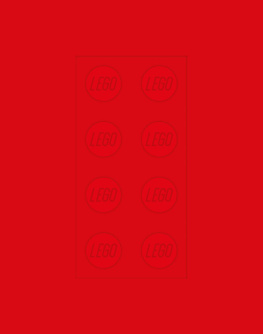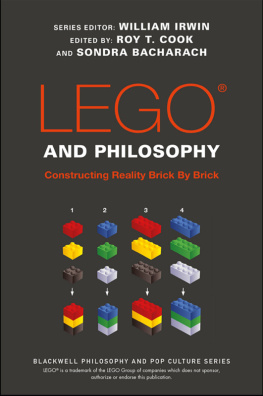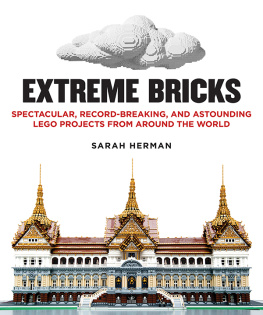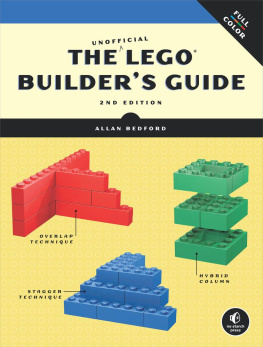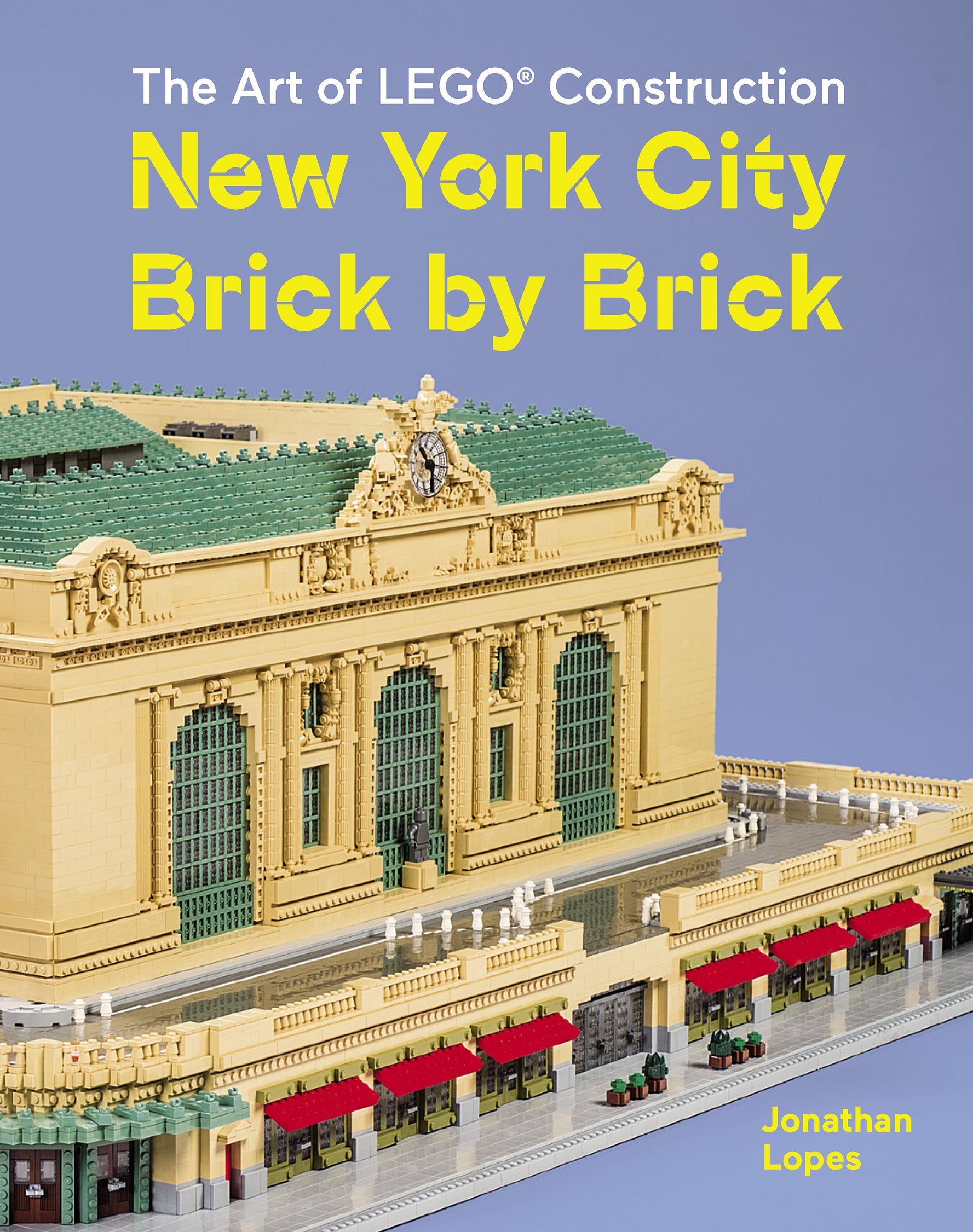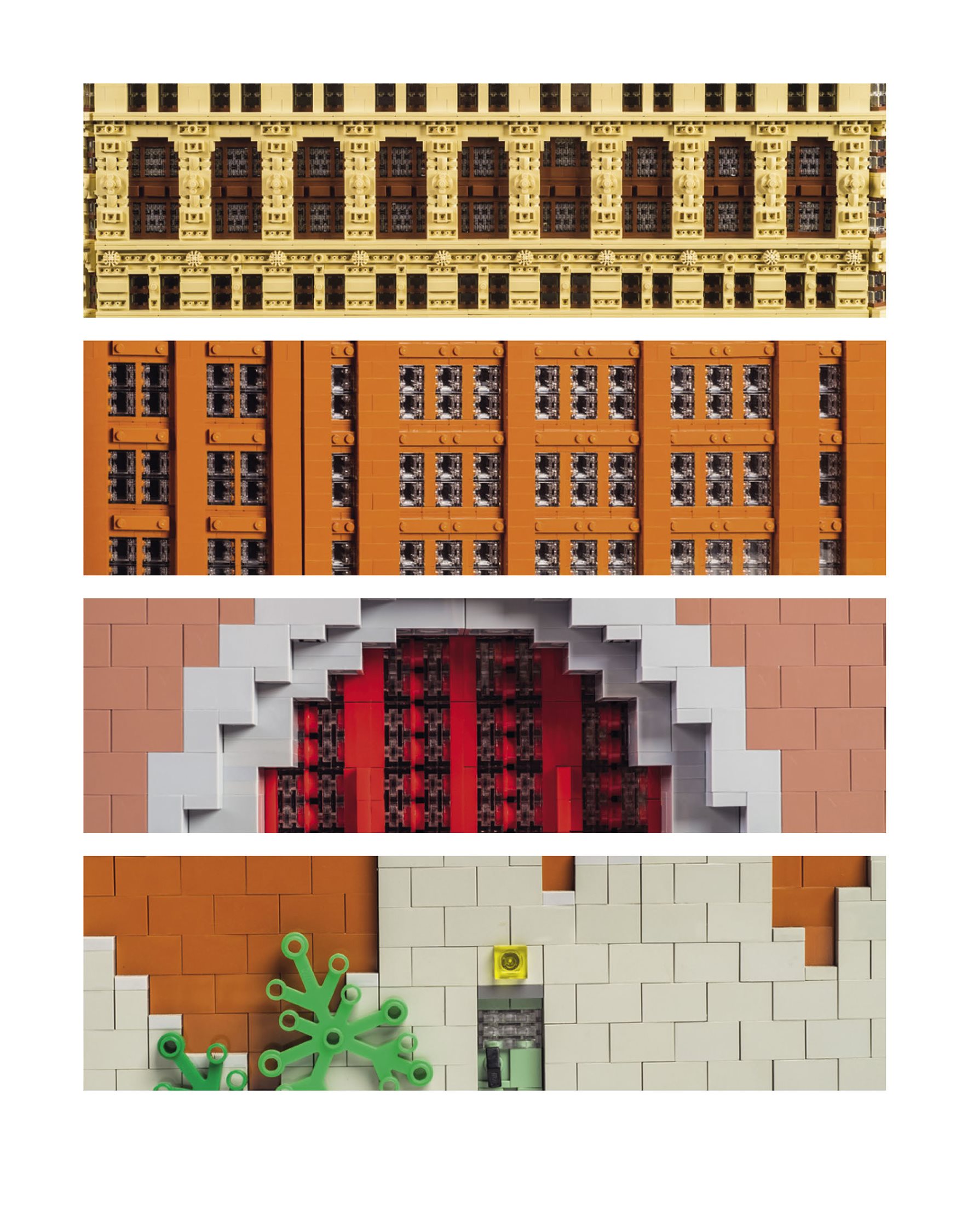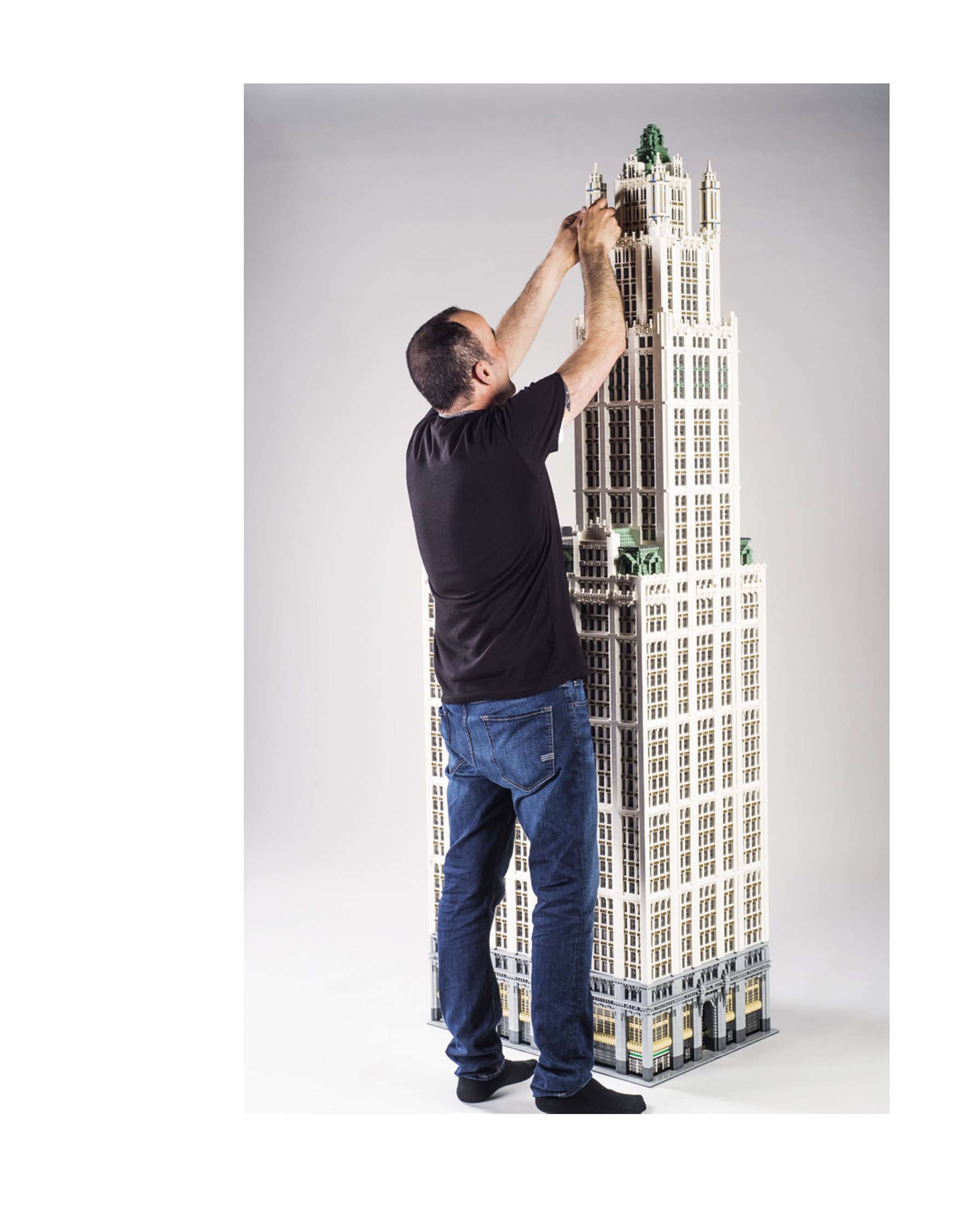
Editor: Garrett McGrath
Designer: Eli Mock
Production Manager: Rebecca Westall
Library of Congress Control Number: 2018936269
ISBN: 978-1-4197-3468-7
eISBN: 978-1-68335-520-5
Text copyright 2019 Jonathan Lopes
Illustrations/photographs copyright 2019 Bryan Regan
Cover 2019 Abrams
Published in 2019 by Abrams Image, an imprint of ABRAMS. All rights
reserved. No portion of this book may be reproduced, stored in a retrieval
system, or transmitted in any form or by any means, mechanical, electronic,
photocopying, recording, or otherwise, without written permission from
the publisher.
Abrams Image books are available at special discounts when purchased
in quantity for premiums and promotions as well as fundraising or educational
use. Special editions can also be created to specification. For details, contact
specialsales@abramsbooks.com or the address below.
Abrams Image is a registered trademark of Harry N. Abrams, Inc.
LEGO, the Brick and Knob configurations, and the Minifigure are trademarks
of the LEGO Group, which does not authorize or endorse this book.
ABRAMS The Art of Books
195 Broadway, New York, NY 10007
abramsbooks.com

Introduction
For as long as I can remember, Ive been pursuing a creative and
artistic life. As a child, I was enrolled in after-school art classes that covered
various artistic mediums, such as painting, drawing, printmaking, and
sculpture. I worked extensively with pastels, which allow for the blending
of colors. They taught me about different color combinations and how
colors can work together to develop subtle contrast. I loved art, but my true
passion was my toy of choice: LEGO bricks. I had a large bag of LEGO pieces
that were augmented a couple of times per year with LEGO kits I received
as gifts. I would typically build the LEGO kits once or twice and then add
the parts to my existing mix. From there I would let my imagination take over
and build my own creations.
That is how things stayed until I was about eleven years old, when
I discovered music. From my teens to my mid-twenties, I threw myself into
it as my creative outlet and art form. This took me from Boston to Los
Angeles and finally, in 1990, to New York City. After a number of years
pursuing a career as a musician, I decided to develop a more stable full-time
career and found my way into the book-publishing industry. It was a
pivotal change for me. I was now immersed in an extremely creative field
and one that offered a wide variety of avenues to explore, including
graphic design, writing, paper engineering, and format development.
Music was now playing a diminished role in my life, and though the
publishing career was quite rewarding, I still felt the need to create on my
own. This was about the time that the LEGO company obtained its
first license to manufacture building kits based on the
Star Wars
franchise.
My interest was piqued, so I went out to a toy store and bought my first
LEGO kit as an adult. I was quickly reacquainted with the shapes, colors, and
pieces that I had known as a child and enjoyed working with them again.
I purchased a number of additional kits and, more importantly, a few general
mixed buckets of LEGO bricks. From there, over the course of a number
of years, I regularly designed and built my own LEGO creations and shared
photos of them online in LEGO fan forums. Soon I was being contacted
by others to design and build things for them. Shortly thereafter I started
participating in art exhibitions in New York City. This all set the foundation for
my art today. The years of building as a hobbyist, unbeknownst to me
at the time, helped me develop the building style and techniques that now
define my work.

This book presents a collection of my New York Cityinspired art.
It also highlights particular building techniques I used to achieve the unique
visual details that we associate with the icons of New Yorks cityscape.
I have found that the inclusion of small details, such as air conditioner units,
trees, and garbage cans, can truly bring a piece to life. But the added
details should not be excessive: There is a balance that needs to be
maintained between the details, the colors, and the textures. Attaining that
special balance is something I strive for with each piece.
I have a very organic approach to creating with LEGO bricks. My process
doesnt involve CAD programs. I prefer instead to sketch out my
ideas on LEGO graph paper, which is available online. When replicating an
existing structure, I research it online, and if I dont have the opportunity
to physically visit it, Ill walk the perimeter using Google Street View. I use
Google Earth to assess the footprint and the roof elements.
My work is meant to capture the essence of each subject, not to
be a replica or a scale model. My intent is to work within the parameters
of each prototype, rendering many details as accurately as I can, but


